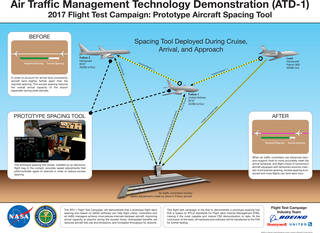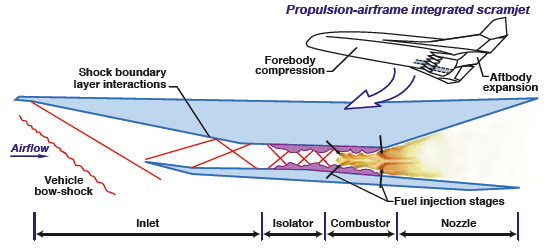Portfolio | Genius Hour
What Technology will come to improve safety and efficency in the commercial and military aircraft industry?


Genius hour is a movement that allows students to explore their own passions and encourages creativity. It provides students a choice in what they learn during a set period of time during school.
Google, allows it’s engineers to spend 20% of their time to work on any project that they want. The idea is very simple, Allow people to work on something that interests them, and productivity will go up. Google’s policy has worked so well that it has been said that 50% of Google’s projects have been created during this creative time. Have you heard of Gmail or Google News? These projects were created by passionate developers that blossomed from their projects.
I chose to do my genius hour on future aircraft technology because I want to be an aerospace engineer when I grow up. My father works at a company that creates landing gear for many aircraft companies like Lockheed Martin, Airbus, Boeing, Bombardier, and the US Air Force. I have been interested in aircraft since I was very young, and I love to learn about new technologies. When I heard about this project, I immedietly knew that it was going to be on aircraft and technology.
I found information about this project by searching many different websites. I place where I found a lot of information was the NASA Website. NASA has been working on aircraft technology for a while, and they have recently been working on creating fully electric aircraft. I also Found information on other websites. I also learned about the 4 forces that make flight possible.

NASA is working on their STARC_ABL prototype Turbo Electric Aircraft. This aircraft would be fully electric (Otherwise known as TurboElectric) and be able to fly at both subsonic speeds, and supersonic speeds. The special thing about this aircraft is that it can fly at low boom supersonic speeds. This means that this aircraft can fly over land instead of exclusively over water. USAF testing concluded that supersonic flight over land would cause windows on houses to shatter. With a low boom supersonic aircraft, it would be able to fly over land at supersonic speeds. This could open up brand new market for both international and national flights.

Another NASA project is the Flight Deck Interval Management. This system is ment to increase security for aircraft taking off or landing at an airport. It also reduces the chance of having a delay. FIM is meant to replace current air-traffic-control systems, as the current systems are usually outdated or obsolete. FIM is able to predict the arrival time with a margin of error of 5-10 SECONDS! This could reduce wait times at airports or just sitting at the Taxiways.

This is a very similar project as the STARC_ABL, but this project is not a new idea. An idea for a supersonic aircraft started in the mid 1960's. The United Kindom and France worked together to create a new supersonic aircraft, The Concorde. The Concorde was a luxury aircraft that could cross the atlantic in 3.5 hours. The Concorde was quickly followed by the Russian Topolev TU-144. The TU-144 was not as popular, but was way less expensive than the Concorde with its insane costs (almost 9,000 dollars for a round trip from New York To London.) The Americans also attempted to join this race, but failed miserably. interestingly enough, the failure known as the Boeing 2707 caused Boeing to create the 747, one of the most popular commercial aircraft of all time. The return of this project means that we might be able to fly to many places in much shorter times than before.

Boundary-layer Ingesting Engines (BLI) are compact, high efficency, gas turbine engines with electric-enhanced propulsion. These engines are meant to be super efficent engines that are smaller than current engines, and have a larger range. These engines could make long distance, non-stop flights possible.
| Technology | Advantages | Disadvantages |
|---|---|---|
| Fully Electric Aircraft | Cheaper to use engines |
|
| Flight Deck Interval Management |
| Expensive implementation Costs |
| Supersonic Transport Aircraft | Shorter Flight Times | Expensive fuel Costs |
| BLI engines | Smaller More Efficient Engines | Inability to go Supersonic |
The Process of doing this project was split into 4 parts. Step one was to learn what websites were reliable sources. The second step was to find information about our project. This was one of the most difficult parts of this project, as it was hard to find a good source of information. The third part of this project was to take notes about the information we gathered. This was not the most challenging processes, but it was one of the most time consuming ones. The final step was to create a website detailing what we have done. Wait, this is that website!
Genius hour is a movement that allows students to explore their own passions and encourages creativity. It provides students a choice in what they learn during a set period of time during school. In STEM Foundations, we did a genius hour project as part of our portfolio. This project has been a very important part of my portfolio, and it helped me in my CER writing. The coding requirements of the genius hour project were very important, as they made up a large portion of the grade. My portfolio at the time was pretty bad and missing a lot of things that were required. The genius hour project made me re-design my portfolio so that it would fit in with the coding requirements. I find that my portfolio looks a lot better than it did before the projects, and I learned a lot of new coding elements in the process. I feel that the Genius Hour project also prepared me for the portfolio reflection scripts, as I was very bad at CER writing before this project.